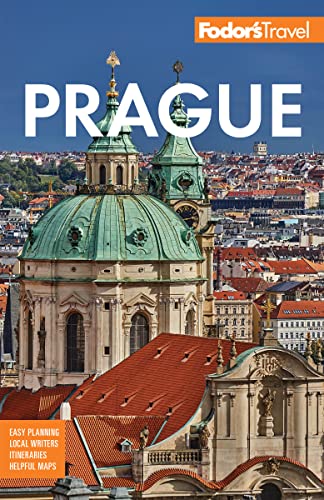Prague Today
The "City of a Hundred Spires" is staggeringly beautiful, but it seems to have lost a bit of the swagger it had a decade ago, when it was the travel industry's golden child. But that’s not such a bad thing, because there’s a new air of maturity, and people are realizing that the city can no longer rest on its architectural and historical laurels. Part of this renewed sensibility can be traced to the death of former president Václav Havel—an international icon and hero of the 1989 Velvet Revolution—in 2011. The second came in 2013, when Prague experienced another major flood in little more than a decade. Both events were a reminder that good things should never be taken for granted. The result is a city that’s palpably more introspective, and perhaps a bit more appreciative of the thousands of visitors who come here each year.
Today's Prague…
…is constantly beautifying itself. Deep down, Prague must have some kind of inferiority complex. What else could explain the perpetual need to make a beautiful city even more beautiful? A few years ago, city officials closed Charles Bridge for a two-year makeover, and then they worked on Prague Castle's Golden Lane. Now, they’ve set their targets on the very emblem of the city atop Wenceslas Square: the National Museum. The grande dame of city museums will be shuttered for a little while to make way for a thorough renovation inside and out. And just down the road from the museum, the main train station (Hlavní nádraží) is freshly spiffed up following a multiyear rehab that has restored some beauty and dignity to a station, that for years, truth be told, had been something of an eyesore.
…is feverishly building for the future. For city planners, it seems, there’s no rest for the weary. After spending the first decade post–Velvet Revolution apparently pondering what capital improvements might be needed, planners have seemingly embarked on everything—at the same time. So while metro builders are busy extending metro Line A (eventually) to the airport (and ripping up the main access road, Evropská, in the process), highway construction crews have at last finished the massive Blanka Tunnel. This is just one component of a road system that is starting to relieve traffic (a real issue in consumer-mad Prague of recent years). Most visitors to the center won’t notice much of this, but for residents all the rebuilding sometimes adds up to one big bordel (literally "bordello"—Czech slang for "big mess").
…is reviving proud traditions. From Bohemia-made toys to craft gin and a return to 19th-century butchery traditions, Czechs are actively returning to native skills and showing off the results at shops, eateries and studios all over the capital. Beer, too, is now widely served in unpasteurized, natural, and flavor-packed varieties. Meanwhile, artisanal textiles, clothing, decor and art are also filling locally owned, surprisingly affordable specialty shops.
…is still paying for everything with korunas. The Czech Republic was among the first of the former Eastern Bloc nations to be admitted into the European Union, in 2004. At the time, it was the shining star of the former communist countries (in yearbook terms, the country would have been voted "most likely to succeed"). The Czechs, however, have yet to adopt the euro despite innumerable promises and passed deadlines. Politicos have said adoption won’t come until 2017 (and the governor of the Czech National Bank said that 2019 is more realistic). So what gives? Well, mostly, the euro crisis of the past few years greatly dented the euro’s prestige. With the Czechs by and large recovered from the economic crisis, there’s no great push to join the common currency. And really, they probably don’t need to. Prices are stable and the country’s accounts are still solid.




